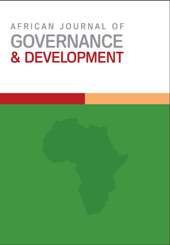Understanding Rural – Urban Migration in Uganda’s Refugee Camps
Main Article Content
Abstract
With continued conflicts all over the world, more refugees will continue migrating to countries they consider safe. According to Konrad-Adenauer-Stiftung and Young Leaders Think Tank (2017), refugees prefer dwelling in urban areas, which can be attributed to the global urbanisation phenomenon. This paper examines the factors influencing rural-urban migration to inform refugee management in urban settings. According to the Office of the Prime Minister, Uganda Refugee Statistics of September 2023, Uganda was host to over 1.5 million refugees, mainly from, South Sudan, the Democratic Republic of Congo, Somalia, Burundi, Eritrea and Rwanda. These refugees are registered in the rural settlements (refugee camps) as provided for by Uganda’s legal framework on the management of refugees, which framework also only recognises refugees in the capital Kampala as urban refugees. However, the landscape has evolved as some refugees have self-settled in various urban centres across Uganda, rapidly increasing the urban population and stressing urban services. Our study findings in Koboko Municipality show various personal, push and pull factors responsible for the refugees’ decision for ruralurban migration. These factors relate to demographic age, education level, gender, better social services, payable employment, economic activities, and utilisation of skills among others. The findings signal the need to recognise and plan for urban refugees in urban areas other than Kampala City. Urbanisation is a factor in refugee management in Uganda.
Article Details

This work is licensed under a Creative Commons Attribution-NonCommercial-NoDerivatives 4.0 International License.
